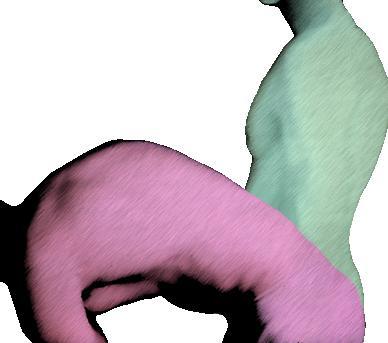 It seems as though every day there is another interesting story coming out of China, involving both 3D printing and advanced surgical procedures. While laws in the United States are more restrictive, preventing the media from obtaining very much information on individual surgeries, China’s media seems to have been jumping all over the various uses of 3D printing within the operating room. This latest case is quite an extraordinary one.
It seems as though every day there is another interesting story coming out of China, involving both 3D printing and advanced surgical procedures. While laws in the United States are more restrictive, preventing the media from obtaining very much information on individual surgeries, China’s media seems to have been jumping all over the various uses of 3D printing within the operating room. This latest case is quite an extraordinary one.
A 52-year old woman, named Mrs. Wong had been living with a spinal deformity her entire life. Born with a form of scoliosis, which her family did not have the money to treat, she suffered with the condition for over half a century. While she didn’t really experience much physical pain until just recently, she did have to face the daily mockery of being called “Hunchback Lui”. Over the years, the spinal deformity manifested into an embarrassing hunchback. Recently she had begun experiencing severe back pain and decided it was time to visit the doctor.
Wong chose to go to First Affiliated Hospital of Nanjing Medical University, as it is a well respected medical center with very experienced surgeons.
Because of the huge curvature of her spine, Ms. Wong stood at just 4′ 11″ tall at the time of her evaluation. It was discovered that her 12 vertebrae were  severely out of place, forming a hump and creating much discomfort. Doctors said that if she wasn’t treated soon, she would probably eventually suffer a severe spinal cord injury, and perhaps even paralysis.
severely out of place, forming a hump and creating much discomfort. Doctors said that if she wasn’t treated soon, she would probably eventually suffer a severe spinal cord injury, and perhaps even paralysis.
Surgeons decided that a pin needed to be implanted into Wong’s upper thoracic spine, and it would be a very risky and challenging procedure since a large number of blood vessels, and nerves resided in the area the pin would be inserted into. A minor mistake could lead to the paralysis of Wong. To help make this extremely difficult and risky surgery a bit less challenging, the surgical team opted to create a 3D printed model of Wong’s spine. Using a CT scanner and MRI data, they were able to create a comprehensive virtual model of the spine, before using a 3D printer to actually fabricate an exact replica. Using an inkjet 3D printer, which uses a binding agent to harden layers of power, one layer at a time, it took the team about 10 hours to print out the medical model.
Typically, a surgery like this would require surgeons to make a 10cm incision in the patient and then attempt to place the pin several times before ultimately finding the exact location. Surgery would take a very long time, and recovery afterwards would be very painful and difficult. Thanks to this 3D printed model though, surgeons knew exactly where the pin needed to be placed, after
performing several practice tests on the replica. Surgical time was cut in half, a much smaller incision was required and the inherent risk was highly reduced.

The surgery ended up going extremely well for Wong, and she even grew an additional 4 cm in height. Her recovery is expected to go much better than it would have with a more traditional surgical approach. Surgeons at the hospital hope to advance their use of 3D printing even further by eventually being able to 3D print actual bone that will be inserted into the human body. They are not quite there yet, but hopefully will be within the next two to three years.
What do you think about this use of 3D printing in straightening out this poor woman’s crooked spine? Discuss in the 3D Printing Aids in Hunchback Surgery forum thread on 3DPB.com.
Subscribe to Our Email Newsletter
Stay up-to-date on all the latest news from the 3D printing industry and receive information and offers from third party vendors.
You May Also Like
3D Printing Unpeeled: New Arkema Material for HP, Saddle and Macro MEMS
A new Arkema material for MJF is said to reduce costs per part by up to 25% and have an 85% reusability ratio. HP 3D HR PA 12 S has been...
3D Printing News Briefs, January 20, 2024: FDM, LPBF, Underwater 3D Printer, Racing, & More
We’re starting off with a process certification in today’s 3D Printing News Briefs, and then moving on to research about solute trapping, laser powder bed fusion, and then moving on...
3D Printing Webinar and Event Roundup: December 3, 2023
We’ve got plenty of events and webinars coming up for you this week! Quickparts is having a Manufacturing Roadshow, America Makes is holding a Member Town Hall, Stratafest makes two...
Intuitive Machines Debuts $40M Hub for Lunar Ambitions and 3D Printing Tech
Best known for its pioneering work in lunar exploration and its development of the Nova-C lunar lander, Intuitive Machines (Nasdaq: LUNR) has marked yet another significant milestone. The leading space...































